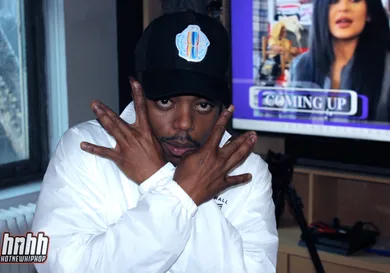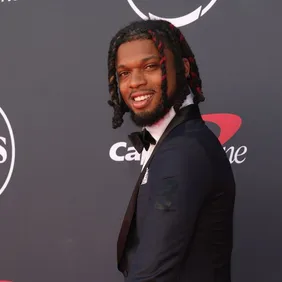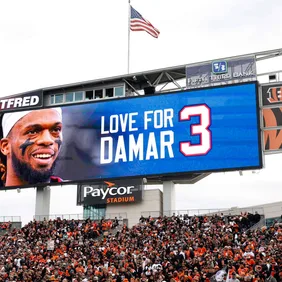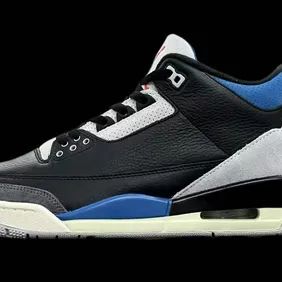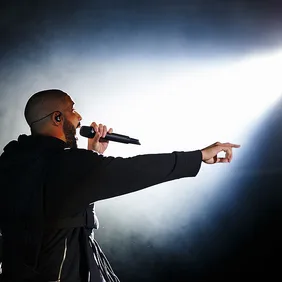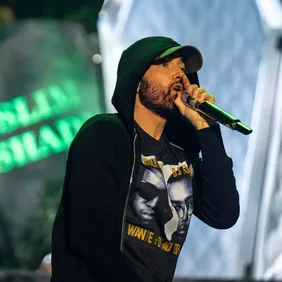New York needs a Rap Superstar. In 2016, we watched as both Desiigner and Young M.A made their efforts to claim their spot on the throne, and ultimately it wasn’t meant to be, at least not just yet. Currently, with the unstoppable rise of Cardi B’s “Bodak Yellow,” most would think the New York rap crown would belong to her, but that’s not the case. To become the tentpole of New York rap you have to be that one reliable figure who, at every turn and every corner, has a song ready to set the city on fire. Not only that, NYC, as the birthplace of hip-hop, has larger responsibility in terms of its crown-bearer, a loftier one too; even with genres and geographical borders bleeding into one another, the New York superstar must still sound NYC, which oftentimes correlates to a certain level of waxing poetic. To be perfectly clear, there's no denying that Cardi B sounds like a New Yorker-- she's NY through and through-- but "Bodak Yellow" is adopting a Florida rapper's cadence, and as an NY Rap Superstars go, something seems amiss. A Boogie Wit Da Hoodie’s debut album The Bigger Artist is A Boogie’s attempt at securing a crown that only fits him, and while he didn’t quite grab it with the same aggressiveness as the NY greats that came before him -- we're talking 50 Cent and Cam’ron, A Boogie did more than enough to cement his status at the cream of New York's crop.
The question going into A Boogie’s debut album was which A Boogie would we be getting? Would we get the A Boogie who exists more as a melodic Meek Mill, bragging about his Patek, or A Boogie’s softer side where he embraces his Drake influence. From the extremely smooth Cardo-produced introduction, “No Promises,” it was clear that A Boogie decided to go with the latter, as the murmuring vocal sample creates an eerie atmosphere that carries through to the rest of the album. A Boogie has never been shy about his Drake influence, one of his earliest Soundcloud singles is a “0 To 100” freestyle, and beyond that, many of his early songs are filled with callbacks to his favorite Drake records. One of A Boogie’s first major looks was Drake bringing him on stage during his Madison Square Garden stop on the Summer Sixteen Tour. The issue with having a strong Drizzy influence, however, is there is a chance that some listeners would listen to the So Far Gone era beat buildups and write A Boogie off as a clone. They would be wrong. A Boogie’s voice is distinct on The Bigger Artist, it's truly his own, on top of which, he brought his own unique New York-bred style to the album that differentiates himself from everyone else in the rap lane right now. With these facts, he's managed to create an album that doesn't actually sound akin to anything else currently in the game-- an increasing hazard of today's trendier rap artists.
The standout track on The Bigger Artist is the PNB Rock and NBA Youngboy-featuring “Beast Mode,” placed near the very end of the tracklist. Produced by Young Troy (who also handles "Fucking & Kissing" with Chris Brown), the track takes advantage of A Boogie and PNB Rock’s chemistry by implementing the rarely well-done collaborative hook (“Beast mode, go beast mode/Balling so hard yeah they think I got the cheat code”) and adding a motivated NBA Youngboy to the song made it feel more complete than many of A Boogie and PNB’s prior collaborations. A Boogie, throughout the album, does a surprisingly good job of selecting featuring rappers who not only add to the moodiness, but who vocally prevent the album from becoming repetitive. 21 Savage over the haunting Murda Beatz production keeps the momentum upwards from the album's already-strong opener, as he tacks on a threat-filled verse (“Bitch I got more bodies than a general in Vietnam”) to go along with A Boogie’s most free-feeling appearance on the album (“I don’t care, fuck a one-on-one ain’t no hands here”). The essential feature on the The Bigger Artist is Kodak Black’s drowsy flow on the platinum single “Drowning.” A Boogie’s love for piano keys seeps through on this track as he sounds near to tears on the irresistible hook.
A Boogie and one of his most frequent collaborators, Don Q, really attempt to capture the spirit of New York on their two back-to-back collaborations. “Money Sprung,” the second, and weaker of the two, is actually/surprisingly produced by Jamz; it incorporates peak Zaytoven-style keys among a weak background flute sample. Despite not being their strongest collaboration ("Somebody" comes out on top), the two records give the street A Boogie fans songs they can cherish. And, at least, A Boogie finally gets his chance to trade in the romance for two minutes of flexing on "Money Sprung" (“I feel like the king of New York/My jeweler is better than yours”).
The third single from The Bigger Artist, “Say A,” has lighthearted keys that sound like it could have been the theme of a children’s show if not for the police sirens in the background, finds A Boogie at his most appealing. A Boogie is simultaneously rapping well, while also taking his vocal range to its limits and, of course, he doesn’t forget to rep New York in the process (“And we come straight out the Bronx so we wildin/Shoutout BK, free Bobby, free Rowdy”). A Boogie’s vocal range is further explored on the Metro Boomin, Nav and Southside-produced “Get To You” which feels like a leftover beat from Perfect Timing. A Boogie’s voice is as smooth as ever, and he even offers up his attempt at the sought-after spot of existing as Metro Boomin’s producer tag with “Metro Boomin make it boom, make it boom.”
Where A Boogie runs into issues on The Bigger Artist is when he swerves too hard into the sex ballad lane ,which leads to an unbearable three song streak on the album. It begins with the Chris Brown-featured “Fucking and Kissing,” followed by a strange Trey Songz & Robin Thicke-assisted track and, then, into the questionably titled “Stalking You.” This glaring sequence presents what I fear about A Boogie, the lane he attempts to enter is a viable but limited one and, honestly, it’s one that he should leave for the less talented. Throughout The Bigger Artist, what we come to love about A Boogie is his smart use of features and his ability to blend both his street persona with a softer, love-song favoriting side. However, not only is the production formulaic on these particular tracks but everything essential about A Boogie is missing.
Normally on albums that incorporate a revolving door of rap’s most well-known producers, like The Bigger Artist does, he result is a project without a clear identity, but A Boogie managed to avoid that. Yes, there are missteps, such as his odd three song chain of “I’m scrolling through your Instagram R&B,” but, for the most part, A Boogie found his voice. While he leans more to the emotional side of his vocal ability occasionally, his more belligerent side still appears, and when it does, it never disappoints. A Boogie, over the last year, has been one of rap’s most under-appreciated hitmakers, consistently releasing tracks that make an impact on the Billboard charts while also remaining competitive with the stars of Soundcloud. What The Bigger Artist accomplished was establishing A Boogie as one of rap’s premier chorus creators with his knack for melody and catchy production. Congratulations A Boogie: you’re a New York rap star. But: let’s just hope next time instead of having the crown placed on his head, he full-outs grabs it, and forces everyone to endure the reign of A Boogie. And of course, more pianos.
